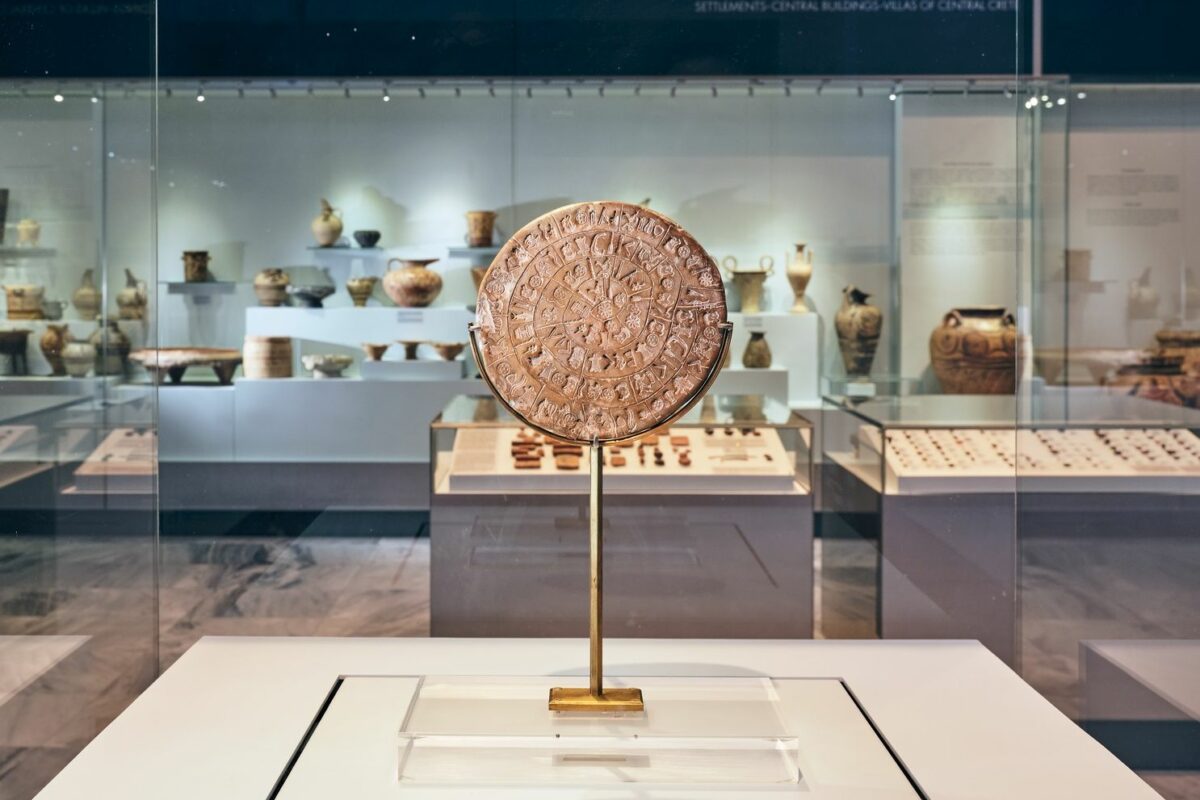
Crete, a land of ancient wonders and timeless beauty, is home to one of archaeology’s most enigmatic artifacts: the Phaistos Disk. Discovered in 1908 at the Minoan palace of Phaistos, this small, circular clay tablet has captivated scholars and travelers alike with its undeciphered script and mysterious origins. As you plan your visit to Crete, delve into the fascinating history of the Phaistos Disk and unravel the mystery that continues to intrigue the world.
The Discovery
The Phaistos Disk was unearthed by Italian archaeologist Luigi Pernier during excavations at the Palace of Phaistos in southern Crete. Dated to the Middle or Late Minoan Bronze Age (between 1850 BC and 1550 BC), the disk measures about 15 centimeters in diameter and is made of fired clay. Its significance lies not only in its age but in the unique script inscribed on its surface.
The Enigmatic Script
Both sides of the Phaistos Disk are covered with 242 symbols arranged in a spiral pattern. These symbols include images of humans, animals, plants, and abstract shapes, stamped into the clay using pre-formed hieroglyphic seals. This method of printing is unique in ancient artifacts, suggesting a level of sophistication and planning.
Despite numerous attempts, the script remains undeciphered. Scholars speculated it could be a form of syllabic writing, like Linear A, another undeciphered Minoan script, or a lost language. Theories abound, ranging from religious hymns to administrative records or even a form of proto-writing. The true meaning of the symbols continues to elude researchers, adding to the disk’s allure and mystery.
Theories and Interpretations
Over the years, many theories have been proposed regarding the Phaistos Disk’s purpose and meaning. Some believe it to be a sacred religious text or a prayer, given the prevalence of symbols that could represent deities or rituals. Others argue it might be an early form of a movable type or a linguistic experiment. The lack of similar artifacts and the isolation of its find make it difficult to draw definitive conclusions.
One popular hypothesis suggests that the disk could be a calendar or a type of proto-computer used for astronomical calculations. This theory is supported by the geometric arrangement of symbols and their possible correlation with celestial events. However, without further evidence, these interpretations remain speculative.
Visiting the Palace of Phaistos
To truly appreciate the mystery of the Phaistos Disk, a visit to its place of origin is essential. The Palace of Phaistos, one of the most significant archaeological sites in Crete, offers a glimpse into the grandeur of Minoan civilization. As you wander through the ruins, you can imagine the bustling activity that once filled its corridors and courtyards.
The disk itself is housed in the Heraklion Archaeological Museum, one of Greece’s most important museums. Here, you can see the artifact up close and explore other remarkable Minoan treasures, gaining deeper insight into this ancient civilization.
Embrace the Mystery
The Phaistos Disk remains one of archaeology’s greatest puzzles, a symbol of the mysteries that ancient Crete still holds. Staying at our hotel provides the perfect opportunity to explore these wonders. Plan your visit with us, and embark on a journey through time, unraveling the secrets of the Phaistos Disk and the rich history of Crete. Book your stay now and become part of the ongoing quest to understand this fascinating artifact.





